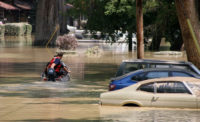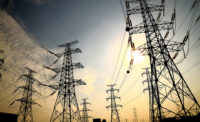Pacific Gas and Electric Company (PG&E) is testing unmanned aircraft systems (UAS), commonly referred to as drones, to enhance the safety and reliability of its electric and gas service. The Federal Aviation Administration (FAA) has authorized PG&E to use drones to assist with inspections of electric and gas infrastructure.
PG&E is conducting two separate testing programs to explore the feasibility of using safety drones to monitor electric infrastructure in hard-to-reach areas and to detect methane leaks across its 70,000-square-mile service area. These aircraft are small and controlled by human operators through remote commands. Drones are flown safely over PG&E's electric and gas infrastructure and always within the visual line of sight of operators.
PG&E recently conducted its first drone test flight at the Balch Powerhouse, a hydroelectric facility located in the high Sierra Mountains outside Fresno. Currently, assessments of facilities like the Balch Powerhouse require employees to use fall-restraint equipment due to the height and the steep angle of the terrain as they visually inspect equipment. This is a hazardous task that requires significant investment in training and protective equipment to perform safely. Drones are able to accomplish such inspections easily and without safety risk to employees.
“These tests are helping PG&E demonstrate that drones can easily fly over remote or hard-to-reach terrain that is often inaccessible on foot, and send back imagery showing the condition of electric lines and equipment. We see significant possibilities not just for employee and public safety, but for increasing reliability of our service and response time to outages. We will continue to explore the benefits of adding safety drones to our set of tools for inspecting utility infrastructure,” said Pat Hogan, senior vice president, Electric Transmission and Distribution, PG&E.









